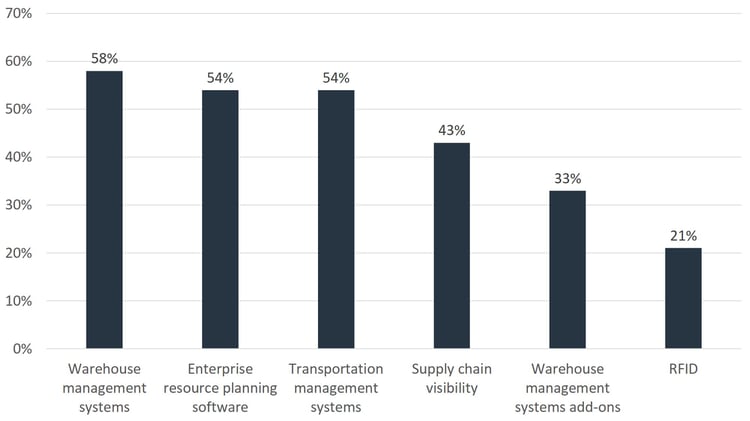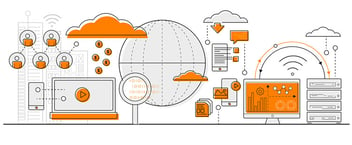The use of IT solutions are not only a trend, but a need. According to Capgemni’s 2015 19th Annual Third Party Logistics Study (3PL Study), 98% of consumers indicate that IT capabilities are necessary for third party providers.
Nevertheless, no software solution is alike. Many companies can offer the same features, but technologies are upgraded constantly, and customers put increasingly higher expectations on specific, customized features for their software needs. The 3PL study shows that only 55% of customers are satisfied with their current supplier capabilities.
How can you measure if a specific transportation management software (TMS) is successful and capable? We give you 6 issues to take into consideration.
1. Are you able to access it anywhere
While a good software can be accessible via PC or Mac, it is increasingly important that they can also be ready to use in tablets or smartphones, in order to manipulate or review data on the road. 33% of respondents to the 3PL Study say they are investing in technologies that allow them to personalize and customize their experience.
2. Can you get more precise reporting
The business logistics improvement cycle requires ever specific reporting. A good software must be able to gather great amounts of previously unattainable information, and provide customized reports for your specific needs and challenges. For instance, a reliable and up to date rate chart can give customers the confidence that they are paying an accurate cost for the distance traveled or the fuel that was used.
However, the 3PL Study finds that only 57% of shippers and 47% of third parties claim to “have access to timely and comprehensive data relating to supply chain planning and operations” in their organizations. For instance, they still get inaccurate detailed reports in determining drive time when mapping out a route.
3. Is it compatible with your existing IT infrastructure
Probably, this is not the first logistics system you integrate in your company. You have an existing operation and a range of software already configured and tuned up. Any new software must be part of the solution to your problems and not a problem in its own.
Therefore, this new system must adapt and be compatible with any other logistics planning, management, database and reporting tools you already use, available to cross information. The software must provide synergies and be open to export and share information.
Here is an overview of the range of specific options companies are investing in software for, according to the 3PL Study report:

These are not isolated solutions. Rather, they need to be able to work as a network.
4. How is the quality of its technical support
Although the technical specifications and features of the different software solutions can be quite similar, the leverage point to choosing one over another is the quality of the people behind the interface.
You must choose a provider with a timely and responsive level of support and orientation, rather than a constant and generic “we are looking into the problem” answer.
As your team adapts and learns to use the software, a technical support team must accompany you in the transition process, with a good training program readily available whenever you have doubts, in order to fully develop the capacities the optimization software opens up. Many people use a narrow set of tools, because they are still learning to use other specific capabilities available.
Customer support is not just an add-on or a cosmetic feature of any company, but an integral part of your supplier’s technical expertise. The 3PL Study shows that 75% of shippers and 77% of providers agree that third parties can benefit from availability of industry-tailored Customer Relationship Management (CRM) capabilities.
5. Flexibility and scalability
The software you choose needs to scale up to the fluctuating needs of any supply chain management process. Not only must it manage an average workload, but to successfully rise to the challenge during periods of high demand, such as Christmas or holidays. With a flexible and scalable software, you shouldn’t need to invest heavily in additional IT capacities, for specific window where your demand is at its peak.
Nowadays, retail is becoming more dependent on technology for real-time visibility and tracking, and many are moving part of their solutions to the cloud. That way they can process large amounts of data at a faster pace, match consumers’ demands with the season, and customize solutions in a massive way.
6. Reliability
Reliability means that software is highly available and maintainable. The more reliable a software, the lesser are the probabilities of failure over a specific time interval.
No company can assure you that their software will work properly 100% of the time. A specific program can crash or an unidentified bug can interrupt your operations. Rather, a reliable software not only guarantees a specific, reduced ratio of these “exceptions”, but monitors and takes note of software malfunctions in order to correct them and quickly update their software.
Cloud computing also provides an extra amount of reliability, as sensitive information is stored in different external servers at the same time, so your data is constantly and safely backed up in case you have a physical problem, so you can quickly pick up where you left off.
Regardless of the issue at hand and the technical advice many can give you, you are the most capable person to assess whether a specific software is reliable, flexible, scalable, responsive, precise and adaptable to your company’s needs.
How do you measure the success of a transport management software? What features do you find more critical when choosing one over another? I appreciate your thoughts by sending me a comment below.



